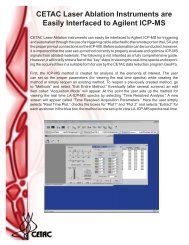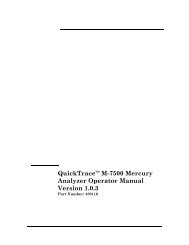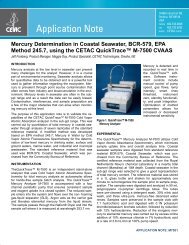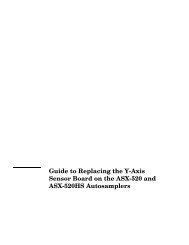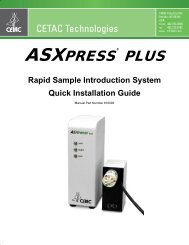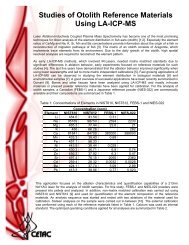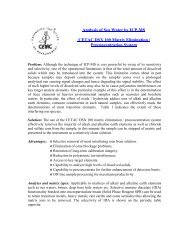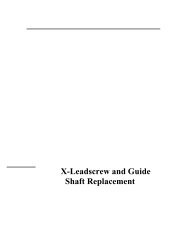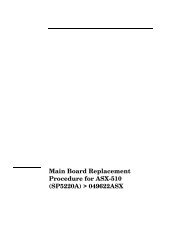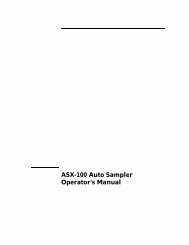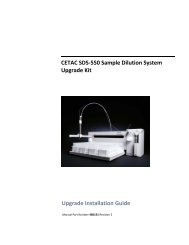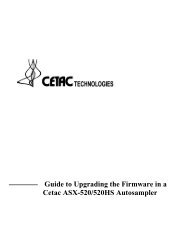CETAC M-7600 Mercury Analyzer Operator's Manual
CETAC M-7600 Mercury Analyzer Operator's Manual
CETAC M-7600 Mercury Analyzer Operator's Manual
You also want an ePaper? Increase the reach of your titles
YUMPU automatically turns print PDFs into web optimized ePapers that Google loves.
Operator’s <strong>Manual</strong><br />
Chapter 5: Maintaining the <strong>Mercury</strong> <strong>Analyzer</strong><br />
Inspect the assembled cell to determine that both O-rings (A, B) are fully<br />
engaged as shown in Figure 5-6. In Figure 5-6, shown without the window and<br />
cell cap, area “C” reveals no O-ring gap. This indicates that both O-rings A and B<br />
of Figure 5-5 are fully engaged. Figure 5-7, shown with window and cell cap,<br />
also reveals no O-ring gap at point C, (the boundary between the cell end (E)<br />
and the cell end cap.<br />
Figure 5-6 Engaged O-Ring. Shown without the window and cell cap.<br />
C - No gap visible<br />
Figure 5-7 Engaged O-Ring. Shown with the window and the cell cap.<br />
C - No O-ring visible D - Window O-ring E - Cell<br />
NOTE<br />
The O-ring “D” visible in Figure 5-7 seals against the cell window.<br />
If an O-ring is NOT engaged, as in Figure 5-6, the O-ring “B” Figure 5-8 is<br />
visible in the gap immediately at the end of the glass cell “E” Figure 5-8. This<br />
should look, instead like region “C” in Figures 5-5 and Figure 5-7. If the O-rings<br />
are not engaged correctly (as in Figure 5-8), then the system may drift and<br />
perform poorly. Assemble and attach the remaining cell end cap to the other<br />
end of the glass cell.<br />
110



